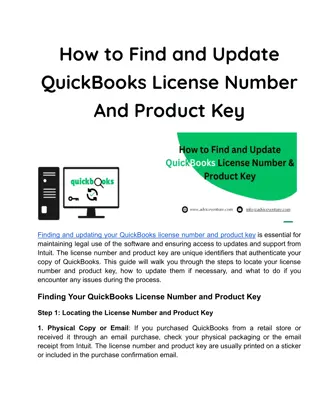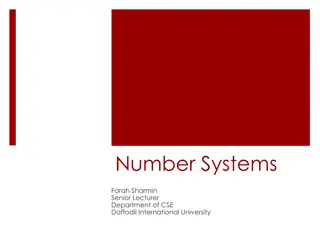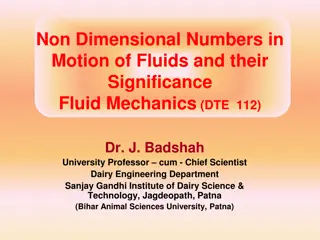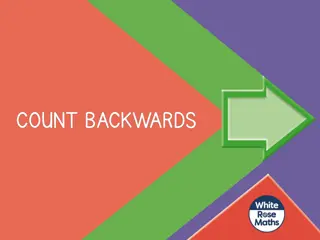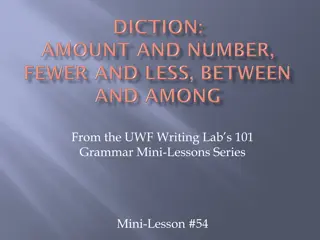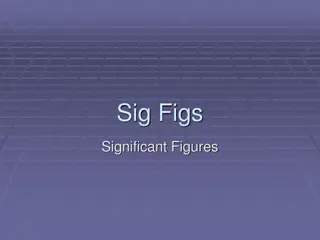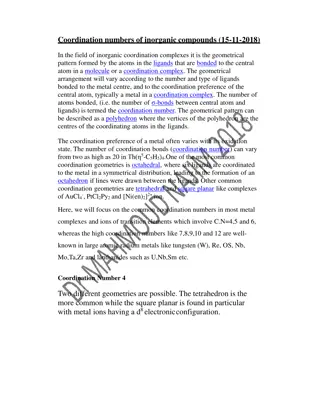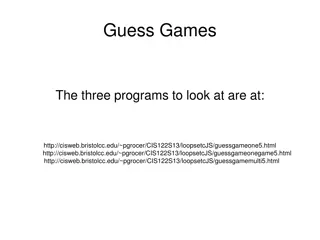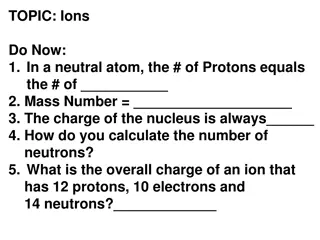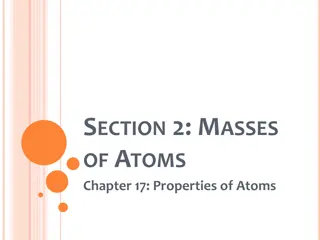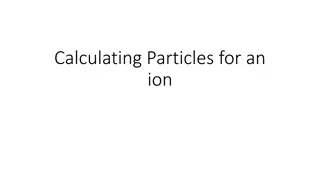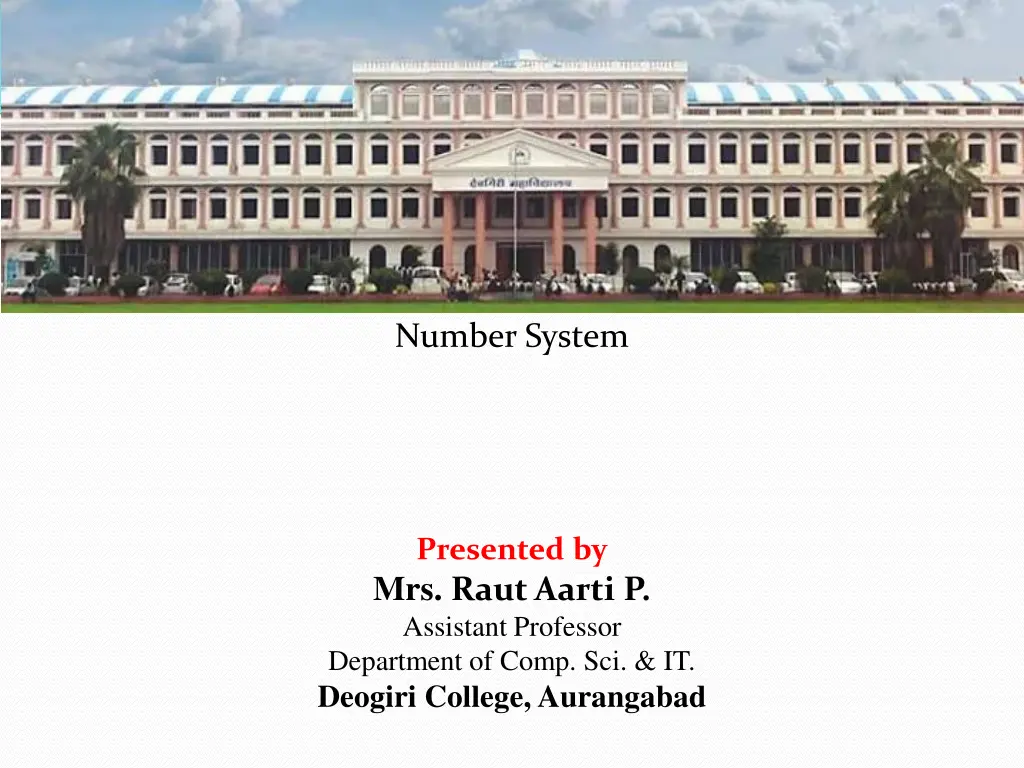
Understanding Number Systems: Binary, Decimal, Hexadecimal & Octal
Explore the world of number systems with insights into Binary, Decimal, Hexadecimal, and Octal systems. Understand how computers interpret numbers and the significance of digits in different positional systems. Discover the characteristics of Binary and Decimal systems and their practical applications in digital computing.
Download Presentation

Please find below an Image/Link to download the presentation.
The content on the website is provided AS IS for your information and personal use only. It may not be sold, licensed, or shared on other websites without obtaining consent from the author. If you encounter any issues during the download, it is possible that the publisher has removed the file from their server.
You are allowed to download the files provided on this website for personal or commercial use, subject to the condition that they are used lawfully. All files are the property of their respective owners.
The content on the website is provided AS IS for your information and personal use only. It may not be sold, licensed, or shared on other websites without obtaining consent from the author.
E N D
Presentation Transcript
Number System Presented by Mrs. RautAarti P. Assistant Professor Department of Comp. Sci. & IT. Deogiri College, Aurangabad
Number System When we type some words or letters the computer translates them in numbers as computer can understand only number. A digital system can understand positional number system only where there are a few symbols called digits and these symbols represent different values depending on the position they occupy in the number. A value of each digit in a number can be determined using 1)the digit 2)The index, where digit is present in the number 3)The base of the number system (where base is defined as the total number of digits available in the number system).
Types of Number System Base or radix: Total number of digit available in the number system. In the digital computer, there are various types of number systems used for representing information. 1)Binary Number System 2)Decimal Number System 3)Hexadecimal Number System 4)Octal Number System
1)Binary Number System Binary number system is used in the digital computers. There are two types of electronic pulses present in a binary number system. The first one is the absence of an electronic pulse representing '0'and second one is the presence of electronic pulse representing '1'. Each digit is known as a bit. A four-bit collection (1101) is known as a nibble, and a collection of eight bits (11001010) is known as a byte. The location of a digit in a binary number represents a specific power of the base (2) of the number system.
Characterstics: It holds only two values, i.e. 0 and 1. It is also known as the base 2 number system. The position of a digit represents the 0 power of the base(2). Example: 20 The position of the last digit represents the x power of the base(2). Example: 2x, where x represents the last position, i.e., 1 (10100)2, (11011)2, (11001)2, (000101)2, (011010)2. MSB and LSB: The leftmmost bit in a given binary number with the highest weight is called as Most Significant Bit(MSB) whereas the rightmost bit in a given number with the lowest weight is called as Least Significant Bit(LSB).
2)Decimal Number System The decimal numbers are used in our day to day life. The decimal number system contains ten digits from 0 to 9(base 10). decimal point holds units, tens, hundreds, thousands, etc. The position in the decimal number system specifies the power of the base (10). The 0 is the minimum value of the digit, and 9 is the maximum value of the digit. For example, the decimal number 2541 consist of the digit 1 in the unit position, 4 in the tens position, 5 in the hundreds position, and 2 in the thousand positions and the value will be written as: =(2 1000) + (5 100) + (4 10) + (1 1) = (2 103) + (5 102) + (4 101) + (1 100) =2000 + 500 + 40 + 1 = 2541
3)Octal Number system The octal number system has base 8(means it has only eight digits from 0 to 7). There are only eight possible digit values to represent a number. With the help of only three bits, an octal number is represented. Characteristics: An octal number system carries eight digits starting from 0, 1, 2, 3, 4, 5, 6, and 7. It is also known as the base 8 number system. The position of a digit represents the 0 power of the base(8). Example: 80 The position of the last digit represents the x power of the base(8). Example: 8x, where x represents the last position, i.e., 1 Examples:(273)8, (5644)8, (0.5365)8, (1123)8, (1223)8.
Conti.. Number 0 1 2 3 4 5 6 7 Octal Number 000 001 010 011 100 101 110 111
4)Hexadecimal Number System The number system has a base of 16 means there are total 16 symbols(0, 1, 2, 3, 4, 5, 6, 7, 8, 9, A, B, C, D, E, F) used for representing a number. The single-bit representation of decimal values 10, 11, 12, 13, 14, and 15 are represented by A, B, C, D, E, and F. Only 4 bits are required for representing a number in a hexadecimal number. Each set of bits has a distinct value between 0 and 15. Characteristics: It has ten digits from 0 to 9 and 6 letters from A to F. The letters from A to F defines numbers from 10 to 15. It is also known as the base 16number system. In hexadecimal number, the position of a digit represents the 0 power of the base(16). Example: 160 In hexadecimal number, the position of the last digit represents the x power of the base(16). Example: 16x, where x represents the last position, i.e., 1
Number 0000 0001 0010 0011 0100 0101 0110 0111 1000 1001 1010 1011 1100 1101 1110 1111 Hexadecimal Number 0 1 2 3 4 5 6 7 8 9 A B C D E F
Basic laws of boolean algebra 1)Commutative Law: If any logical operation of two Boolean variables give the same result irrespective of the order of those two variables, then that logical operation is said to be Commutative. The logical OR & logical AND operations of two Boolean variables x & y are shown below OR operator A + B = B + A AND operator A * B = B * A The symbol + indicates logical OR operation. Similarly, the symbol . indicates logical AND operation and it is optional to represent. Commutative law obeys for logical OR & logical AND operations.
2) Associative Law: If a logical operation of any two Boolean variables is performed first and then the same operation is performed with the remaining variable gives the same result, then that logical operation is said to be Associative. The logical OR & logical AND operations of three Boolean variables x, y & z are shown below. (A.B).C=A.(B.C) (A+B)+C=A+(B+C) Associative law obeys for logical OR & logical AND operations.
3) Distributive Law: If any logical operation can be distributed to all the terms present in the Boolean function, then that logical operation is said to be Distributive. The distribution of logical OR & logical AND operations of three Boolean variables x, y & z are shown below. A.(B+C)=AB+AC A + BC = (A + B) (A + C) Distributive law obeys for logical OR and logical AND operations.
Conti.. 4)Complement law: A + A' = 1 A.A'= 0 5)Absorption law: A.(A+B) = A A + AB = A 6)Idempotent laws: A + A = A A . A = A



